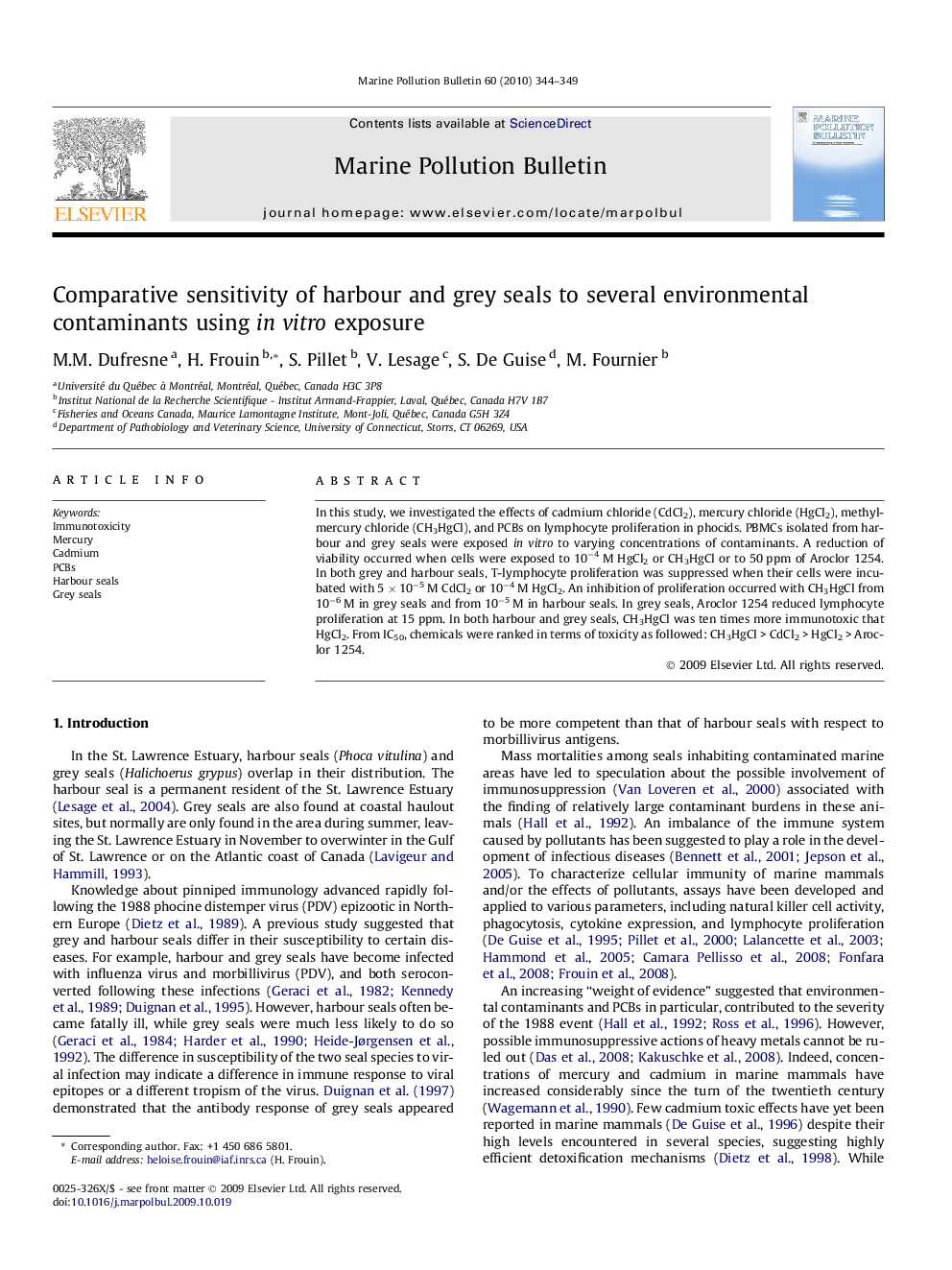| Article ID | Journal | Published Year | Pages | File Type |
|---|---|---|---|---|
| 6362734 | Marine Pollution Bulletin | 2010 | 6 Pages |
Abstract
In this study, we investigated the effects of cadmium chloride (CdCl2), mercury chloride (HgCl2), methylmercury chloride (CH3HgCl), and PCBs on lymphocyte proliferation in phocids. PBMCs isolated from harbour and grey seals were exposed in vitro to varying concentrations of contaminants. A reduction of viability occurred when cells were exposed to 10â4 M HgCl2 or CH3HgCl or to 50 ppm of Aroclor 1254. In both grey and harbour seals, T-lymphocyte proliferation was suppressed when their cells were incubated with 5 Ã 10â5 M CdCl2 or 10â4 M HgCl2. An inhibition of proliferation occurred with CH3HgCl from 10â6 M in grey seals and from 10â5 M in harbour seals. In grey seals, Aroclor 1254 reduced lymphocyte proliferation at 15 ppm. In both harbour and grey seals, CH3HgCl was ten times more immunotoxic that HgCl2. From IC50, chemicals were ranked in terms of toxicity as followed: CH3HgCl > CdCl2 > HgCl2 > Aroclor 1254.
Related Topics
Physical Sciences and Engineering
Earth and Planetary Sciences
Oceanography
Authors
M.M. Dufresne, H. Frouin, S. Pillet, V. Lesage, S. De Guise, M. Fournier,
